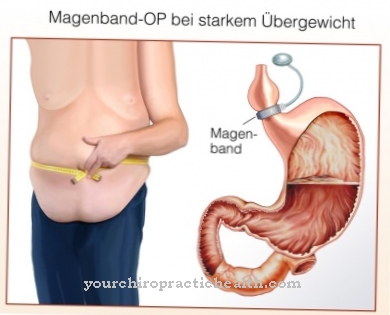As Proctoscopy a reflection of the rectum is called. A special endoscope is inserted into the anal canal.
What is Proctoscopy?

Proctoscopy is an invasive method of examining the anal canal (canalis analis) and the lower part of the rectum. The procedure also bears the names Rectoscopy, Anal canal mirroring or Anoscopy.
The doctor uses an endoscope to look at the anus and the lower portion of the rectum. To do this, he inserts the proctoscope into the patient's anus. Proctoscopy is useful for diagnosing proctological diseases. In addition, therapeutic measures can be carried out with it.
Function, effect & goals
Proctoscopy is mainly used for complaints in the anus or in the lower region of the rectum. This could be pain, blood in your stool, or bleeding in your anus. Other indications are discomfort with bowel movements, nodular changes in the anus or the discharge of mucus.
A rectoscopy is considered helpful in the case of a hemorrhoid problem. The affected people develop enlarged hemorrhoids. Anus vessels, which occur in every human being, are called hemorrhoids. If their enlargement occurs, this is noticeable through unpleasant symptoms such as pain, bleeding and itching. In the case of internal hemorrhoids in particular, a proctoscopy provides significantly better detection than a digital examination of the rectum. The examination results are made possible by the presence of a front opening on the proctoscope.
With this opening, the hemorrhoids can be moved into the inner area of the endoscope. In the case of hemorrhoidal complaints, proctoscopy is not only used for diagnosis, but can also be used to monitor the progression and for therapeutic purposes. An anal canaloscopy is also useful in the case of fistulas, an abscess, an anal exzema or a fissure in the anus. Since a tumor on the anus can also be detected during a proctoscopy, the examination method is part of early cancer detection.
Further areas of application are cryptitis (inflammation of the rectum), proctitis (inflammation of the rectum wall and anal canal), papillitis (inflammation of the anal papillae), periproctitis (inflammation of the rectum and anal tissue) and polyps.
As part of a proctoscopy, the proctologist uses a rigid metal proctoscope or flexible tube. The instrument is shaped like a tube and is between 10 and 15 centimeters long. The variable diameter when examining adult patients is 1.5 to 2.0 centimeters. The rectoscopy takes place either in the lithotomy position, knee-elbow position or left side position. The doctor blindly inserts the proctoscope with one finger. At the same time, the pipe is covered by a cone on the inside. The patient is sitting or lying on a special chair. A lubricant gel is used so that the endoscope can move forward better. Once the proctologist has fully inserted the instrument, he removes the cone. He then looks at the anal canal while gradually moving the tube outward. For a better look, the doctor uses a light source, which is a special cold light lamp.
The patient must empty the rectum prior to the anal canaloscopy. This is mostly done naturally.If this does not lead to success, the patient is given a laxative around 60 minutes before the start of the examination. This is usually a suppository or an enema. With this drug, the bowel can be emptied within 15 to 30 minutes. No further preparations are required for proctoscopy. In some cases the anal canaloscopy also takes place without prior colon cleansing because the examining doctors want to avoid irritation of the intestinal mucosa. Anesthesia is usually not necessary. Some patients are given a sedative instead.
A proctoscopy only takes five to ten minutes. If necessary, a tissue sample can be taken with the proctoscope, which is then examined more closely in a laboratory. But therapeutic measures are also possible as part of a rectoscopy. This includes the sclerosing of hemorrhoids, which is known as sclerotherapy, and a ligature (binding) of the blood supply.
Risks, side effects & dangers
Complications or side effects are extremely rare with proctoscopy. This sometimes includes injuries to the intestine such as piercing the intestinal wall. Bleeding is also possible when tissue is removed (biopsy) or hemorrhoids are treated medically. Possible side effects are allergic reactions or infections.
Bleeding during a colonoscopy is also an indication of inflammation or a tumor, as it only shows up very rarely. The bleeding is then caused by previous damage to the intestinal wall structure. If pain occurs when inserting the proctoscope into the anus, this indicates a tear in the mucous membrane of the anus. As a rule, the people examined find the proctoscopy uncomfortable, but not painful. A possible contraindication for proctoscopy is an increased tendency of the examined person to bleed. If the patient suffers from a low Quick value, an insatiable bleeding can even endanger life.













.jpg)

.jpg)
.jpg)











.jpg)